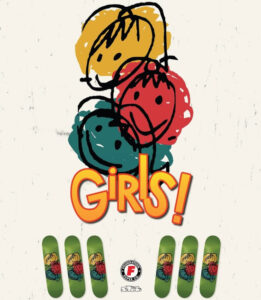
At first glance, the iconic streetwear brand Supreme and Martin Scorsese’s cinematic masterpiece “Taxi Driver” may not seem to have much in common. After all, one is a global fashion phenomenon built on limited releases and hype, while the other is a brooding film noir from the 1970s. However, a closer look reveals that both are deeply rooted in counterculture and subversion, tapping into themes of rebellion, disillusionment, and a search for identity. Supreme and “Taxi Driver” transcend their respective mediums, resonating with audiences who feel disaffected by mainstream values. This article explores the thematic intersections between these cultural touchstones and their shared influence on fashion, film, and the broader world of popular culture.
Counterculture and Rebellion
Supreme’s ethos is built on a foundation of rebellion and nonconformity. Established in 1994, the brand emerged from the raw, gritty streets of New York City as a symbol of the skateboarding subculture. Its appeal lay in its unapologetic embrace of anti-establishment values, a sentiment reflected in its limited product drops, connects with underground artists, and often controversial designs. Supreme’s aesthetic is defined by a clash of high and low culture—combining images of fine art and punk rock, luxury fashion and skate culture—thus creating a space for those who reject mainstream commercialism in favor of a more subversive identity.
Similarly, “Taxi Driver” captures the spirit of rebellion in its portrayal of Travis Bickle, an isolated, disillusioned figure navigating the chaotic, morally bankrupt landscape of 1970s New York City. Travis’s disdain for the world around him is palpable as he expresses disgust at the decadence, crime, and depravity he witnesses. Like Supreme’s anti-commercial ethos, Travis’s worldview is shaped by a rejection of societal norms. His struggle to connect with others and his deep-seated desire to purify the city reflect a sense of disconnection that fuels his rebellion against the status quo. Travis’s iconic line—“You talkin’ to me?”—epitomizes his confrontational attitude, encapsulating a raw, unfiltered defiance that resonates with those who see the world as a place of alienation and corruption.
Subversion of Expectations
Supreme has built its empire on the subversion of expectations. In an industry that typically relies on traditional marketing strategies, Supreme turns the model on its head by intentionally limiting supply, creating hype through scarcity. Its collaborations range from luxury fashion houses like Louis Vuitton to cult film references such as “The Warriors”. Supreme’s products, which sometimes include unexpected items like brick-shaped collectibles, embody a defiance of categorization, prompting consumers to rethink the boundaries between streetwear and high fashion. The brand’s ability to defy expectations and create products that are at once absurd and desirable reflects its underlying philosophy: disrupt the norm, provoke thought, and embrace contradiction.
“Taxi Driver”, too, is built on subverting expectations. While the typical Hollywood film of its era often followed clear moral guidelines and satisfying resolutions, “Taxi Driver” presented a protagonist who was not a conventional hero but rather an anti-hero whose descent into madness blurs the line between right and wrong. Scorsese’s direction and Robert De Niro’s haunting performance force the audience into an uncomfortable position of empathy with Travis, a man whose increasingly violent actions challenge the viewer to question the nature of morality. By placing us inside the disturbed psyche of Travis Bickle, the film subverts the typical narrative arc of redemption, offering no clear answers and instead leaving us to ponder the complexity of human nature.
Urban Decay and Identity
One of the most striking parallels between Supreme and “Taxi Driver” lies in their shared representation of urban decay and its effect on identity. Supreme’s New York roots are palpable in its designs, which often feature imagery of the city’s grittier aspects—subway stations, graffiti, and concrete landscapes. This urban aesthetic is not simply a backdrop but a central component of the brand’s identity, reflecting a reality where beauty and brutality coexist. The brand’s appeal to skaters, artists, and rebels alike speaks to an authenticity born from navigating and thriving within the challenges of urban life.
“Taxi Driver” paints a bleak picture of New York City, where violence, corruption, and despair seem to permeate every corner. Travis Bickle’s identity is inextricably linked to his environment, and his transformation over the course of the film is mirrored by his increasingly warped perception of the city. As Travis spirals into deeper disillusionment, the city’s decay becomes a symbol of his inner turmoil. He is a product of his surroundings, and his quest for identity leads him down a path of violence as he attempts to reconcile his need for purpose with a world that offers none. The city, with its grime and chaos, is not just a setting but a character itself, reflecting the fractured psyche of those who inhabit it.
Impression
Supreme’s impact on streetwear and fashion is immeasurable, as it has redefined what it means to be a brand in the modern age. It exists not just as a purveyor of clothing but as a symbol of cultural relevance and status. Its influence can be seen in the way other brands now approach collaborations, marketing, and product releases. Much like “Taxi Driver” changed the landscape of American cinema by challenging traditional narrative structures and character archetypes, Supreme has forced the fashion world to rethink what defines a successful brand.
“Taxi Driver” remains a touchstone in film history, celebrated for its raw portrayal of urban alienation and the complexity of the human condition. The film’s influence extends beyond cinema, permeating music, art, and even fashion. Its themes of disillusionment, identity, and moral ambiguity continue to resonate in a society that often seems as divided and conflicted as the New York City depicted in the film.
Supreme and “Taxi Driver” may operate in different cultural spheres, but their shared embrace of counterculture, subversion, and rebellion connects them as kindred spirits in the world of art and expression. By challenging conventions and provoking thought, both have earned their places as cultural artifacts that continue to inspire and influence. As Supreme’s box logo tees and Taxi Driver’s haunting images remain firmly embedded in popular culture, they serve as reminders that true creativity often comes from those willing to confront the uncomfortable truths that lie beneath the surface.
No comments yet.








